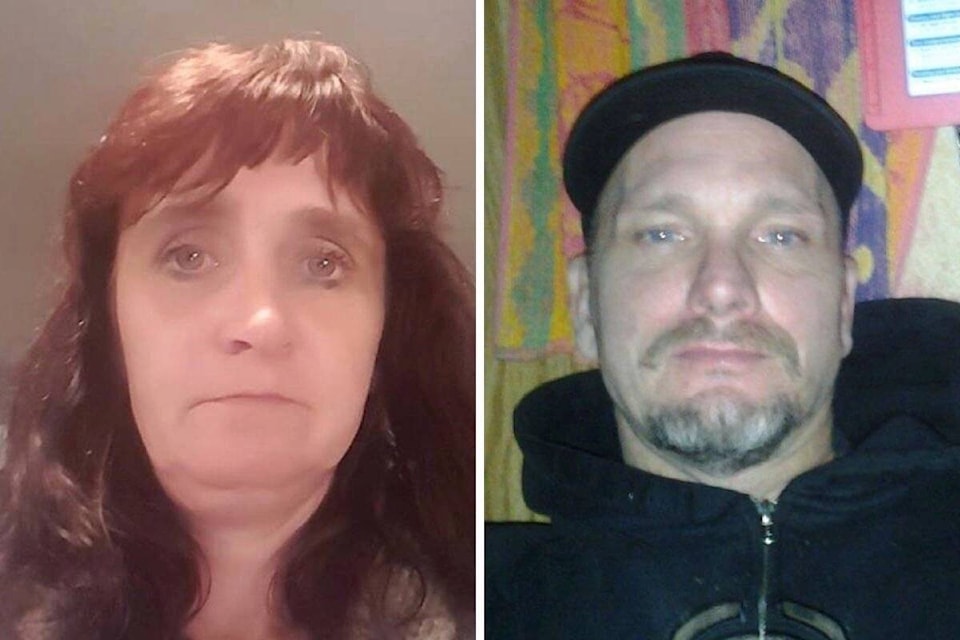A coroner’s inquest jury has made seven recommendations after hearing two weeks of testimony into the shooting deaths of Randy Crosson, 48, and Nona McEwan, 45, both killed by Emergency Response Team police during a March 29, 2019 hostage-taking in the Whalley house she rented.
Crosson held his girlfriend McEwan hostage and used her as a human shield, the inquest heard.
Coroner Margaret Janzen presided over the inquest in Burnaby, at Coroners’ Court, with a jury of four women and a man on April 25 turning in a verdict classifying both deaths as homicides resulting from multiple gunshot wounds.
In McEwan’s case, the jury made no recommendations but presented seven related to Crosson, including four to the Ministry of Public Safety and Solicitor General, two to RCMP E Division and one to E-Comm 9-1-1.
The jury recommended to the ministry that it “provide extended training to probation officers in mental health disorders and addictions; review and develop mental health agency relationships/partnerships with health authorities and other agencies to provide additional tools and supports to probation officers and their clients; conduct coroner’s inquests in a timely manner; and capture by audio, visual, and other means events involving Emergency Response Team members.”
To the RCMP E Division, the jury recommended it “create and implement positions for full-time negotiators to be scheduled in a manner that ensures a full team is available, without delay, and in a manner that provides for training in accordance with recognized and emerging standards” and “ensure that the Emergency Response Team has access to explosive devices without delay.”
Further, it recommended that E-Comm 9-1-1 “ensure call-takers are trained to play back recorded 911 calls related to critical incidents to crisis negotiation teams for proper triage, assessment, and further action.”
A senior bureaucrat in the provincial government testified April 23 that nothing could have been done differently by authorities in their dealings with Randy Crosson that would have saved Nona McEwan’s life.
“From the perspective of our responsibility, no, I really don’t think there was,” said Simon Glen, deputy provincial director for B.C. community corrections in the Ministry of Public Safety and Solicitor General. “Our clients do bad things, and every time that happens we look and see were there opportunities, were there learnings, and it’s really easy in hindsight when you know the eventual outcome to sort-of say yes, we could have made this decision differently or we could have done something differently.
“When I look at this case, even knowing the eventual outcome, I don’t see decisions that we could have made differently that would have resulted in anything different.”
Glen is responsible for oversight of all probation officers across the province.
Probation officer Rob Ryhorchuk testified that he was assigned to Crosson’s case in 2015 after Crosson was convicted of robbery. Crosson’s criminal history began in 1996, primarily involving break-ins, theft, assault, carrying a weapon and numerous convictions for failing to comply with court orders.
In 2003, he was convicted of assaulting McEwan and released on probation. “His explanation of the offence to his supervising probation officer at that point was that he threw a sandwich,” Ryhorchuk tetified.
A Surrey-based police watchdog – the Independent Investigations Office – in 2020 found the RCMP’s Emergency Response Team (ERT) blameless in the shooting deaths. The standoff saw roughly two dozen police vehicles, as well as an armoured vehicle, surround her home in a cul-de-sac near 132A Street and 100A Avenue.
McEwan was killed when she was struck by two police bullets as ERT officers fired on Crosson, who held a large knife to her throat and had “what appeared to be” a gun in his hand. Forensic police later found a “realistic-looking” replica pistol between the bed and the wall. Crosson was pronounced dead at the scene and McEwan died on the way to hospital.
Ron MacDonald, chief civilian director of the IIO, also testified April 23 at the inquest.
“The circumstances that were in play, it’s understandable that they took the action they did. In hindsight, was there other ways to do it? The key there, though, is the clock’s ticking, but they had basically run out of time,” he told the coroner and jury.
“The time limit that he artificially created made a lot of difference, and then it went from the hour down to the five minutes down to like two minutes, one can understand that the action they took, why they took it. In that sense, I can’t say it was unreasonable.”
That Crosson had a replica gun was immaterial to the outcome, MacDonald opined.
“He knew what he was doing was wrong,” he testified. “He’s the one that caused her death. … The fact that it wasn’t a real gun was immaterial. It looked like a real gun, he was talking about it like a gun. He had previously set off a bear-banger which made it seem like he had a gun.”
“In an ideal world, not as many shots would have been taken,” MacDonald told the inquest. “They didn’t have a choice, they had to go in.”
MacDonald concluded in his 2020 investigation that McEwan died because of Crosson’s actions, as he held her against her will in her home, threatened her life, “and provoked an armed response from the police aimed at saving her.” His actions, MacDonald said, “made it inevitable that officers would fire on him when they broke into the bedroom, and who held her in front of him as a shield against police bullets.”
Accordingly, he found, “I do not consider that there are reasonable grounds to believe that an officer may have committed an offence under any enactment and therefore the matter will not be referred to Crown counsel for consideration of charges.”



